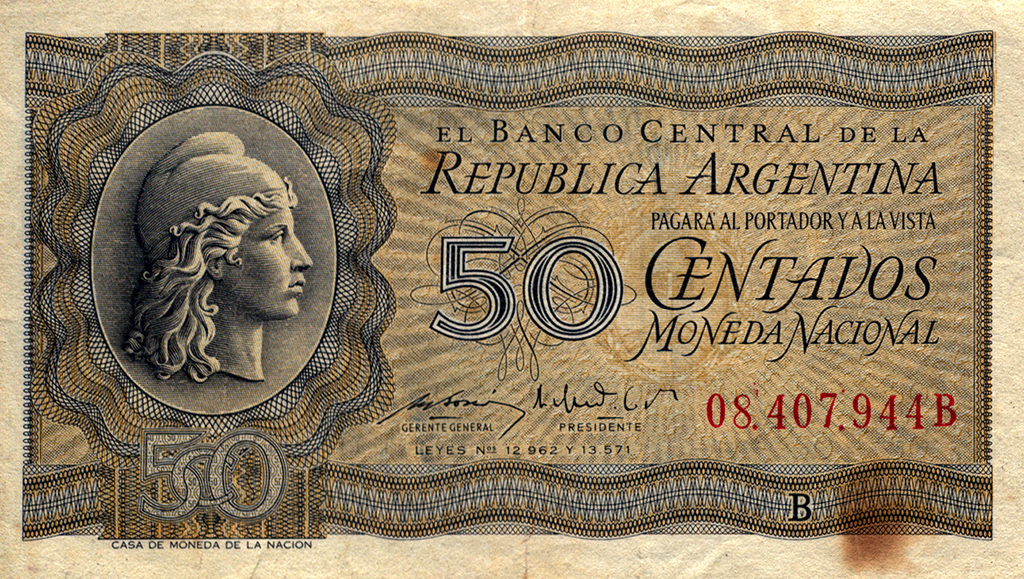
The predicament of the Argentine Peso



To the south of South America, Argentina covers much of the peninsular landmass west of Andes, leaving a slim slice for its neighbor Chile. Officially, the largest Spanish speaking nation, Argentina is the second largest in size after Brasil. Archeological evidences date human habitation going back to the Paleolithic times. During medieval period, the Incas ruled over much of the north-western Argentina. Devastation struck in form of Spanish conquest and subsequent colonization in the 16th Century. The idea of independence germinated early; proclaimed and achieved sometime between 1810-1818. Post-independence, it was somewhat turbulent with civil wars all around, however peace and prosperity finally prevailed in the second half of 19th Century CE. The Argentine demographics is mixed with a mammoth share of people with Italian ancestry and cultural leanings. Argentina is regional power today and a fast growing economy.





The first banknotes in Argentina were issued by the Spanish during the colonial rule. Peso was the colonial currency that was replaced by Peso fuerte in 1826 CE after the Argentine independence. In 1881 CE came the Peso Moneda Nacional followed by Peso banknotes in 1884 CE; issued by Banco Nacional these banknotes helped to bring together the entire nation. Use of typography as primary object of ornamentation in the 1903 edition of banknotes is noteworthy. Banking framework was restructured in 1935 and thus came Banco Central de la República Argentina. In 1970, Peso Ley was introduced that was later replaced by Peso Argentino in 1983. Two years later, in 1985 came Austral. Finally, the nation adopted the current Peso denomination in 1992. National mint of Casa de Moneda de la República Argentina has been the printer of all banknotes.





Main Features | The latest edition of Argentine Pesos possess an evolved visual splendor in line with the changing times. 500 Peso of the same series narrowly missed the IBNS Banknote of the Year 2016. Adjudged “Runner-up” amongst 120 new designer banknotes, the recognition was well-deserved. The 2016 Series has a vertical alignment on obverse with (i) Numerals for denomination (3 places -2 in horizontal and 1 vertical alignment) (ii) Texts for denomination in words, banking authority – Banco Central De La Republica Argentina (iii) Images – One dominating (showcasing a native faunal or avifaunal species) and 2-3 secondary images (showcasing the floral diversity) over a background suitably matched in color schemes. On the reverse, there are (i) Numerals for denomination at 2 places, Serial Number at 2 places (ii) texts for “Republica Argentina – en union y libertad” (National Motto meaning “in unity and freedom”), 2 designations of signatories, (iii) a collage of images depicting ecological habitats, floral exuberance, profile of Argentine map, compass, national emblem amongst a host of other symbols/icons. The arrangement is balanced giving equal importance to everything and nothing prominent.





